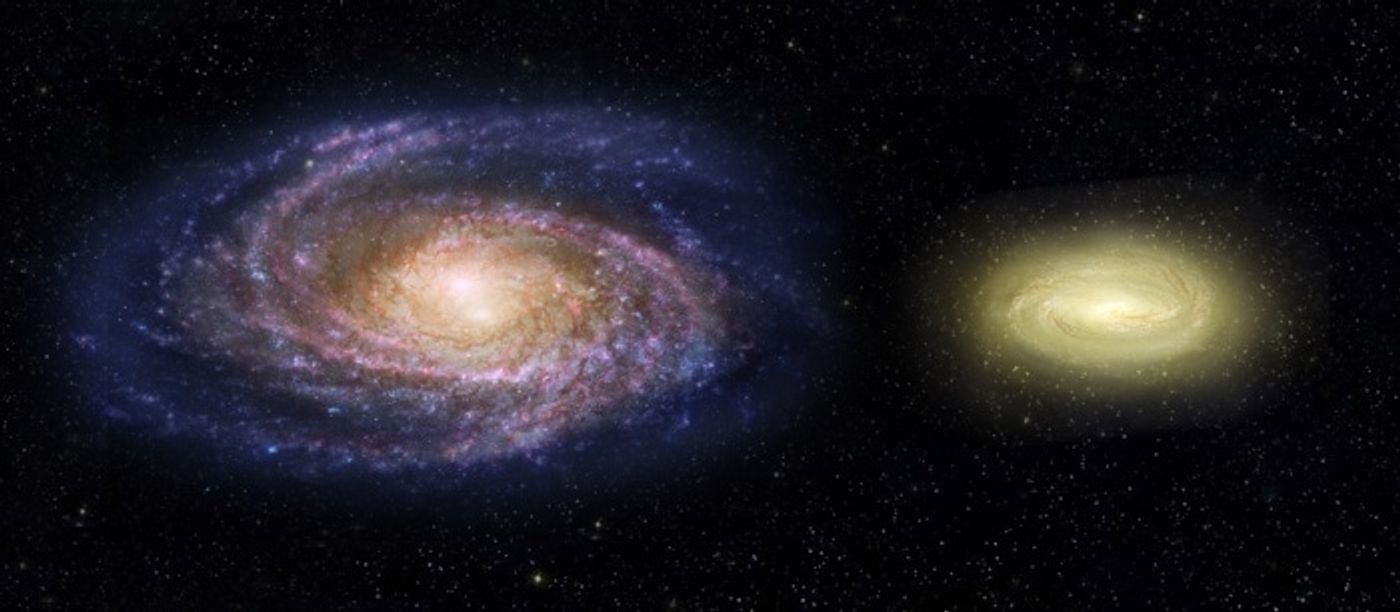Hubble & Gravitational Lensing Reveal Secrets About a Distant "Dead" Disk Galaxy
Astronomers have always thought they had a pretty good idea about how galaxies form and evolve over time, but a newly-discovered galaxy seems to be challenging what we know about these processes and is raising far more questions than we ever could have imagined.
A disk-shaped “dead” galaxy dubbed MACS2129-1 was discovered by using a natural lensing effect produced by a galaxy cluster dubbed MACS J2129-0741 in tandem with the power of NASA’s Hubble Space Telescope, and to the astronomers’ surprise, it was quite a noteworthy discovery.
Image Credit: NASA, ESA, and Z. Levy (STScI)
In a study published in the journal Nature, the researchers describe MACS2129-1 as a remnant of the early universe that’s been lurking around since the Big Bang. It’s three times as massive as the Milky Way, but only half the size; nevertheless, additional observations made by the European Space Agency’s Very Large Telescope (VLT) reveal that it spins up to twice as quickly than our galaxy does.
Related: Hubble spies two colliding galaxy clusters
MACS2129-1 isn’t producing stars anymore, and hasn’t since just a few billion years immediately following the Big Bang. This tells us it’s a very old galaxy and that it tells a story about galaxy evolution that we didn’t fully understand until now.
The researchers note how the stars within the galaxy appear to have formed within the disk-shaped skeleton of the galaxy itself, rather than via billions of years of galaxy mergers, a quality made evident by the neat organization of the stars.
Had the stars have been introduced by galaxy mergers, astronomers would have expected to see much more chaos surrounding the star positions that were observed. The lack of chaos means that they formed more peacefully than by galaxy merger.
This is said to be the first time of any direct observational evidence that spiral galaxies like our own Milky Way evolve to become the giant elliptical ones we sometimes come across in space observation.
Related: Is this galaxy mostly comprised of dark matter?
"This new insight may force us to rethink the whole cosmological context of how galaxies burn out early on and evolve into local elliptical-shaped galaxies," study lead author Sune Toft of the University of Copenhagen, Denmark said in a statement. "Perhaps we have been blind to the fact that early "dead" galaxies could in fact be disks, simply because we haven't been able to resolve them."
"If these galaxies grow through merging with minor companions, and these minor companions come in large numbers and from all sorts of different angles onto the galaxy, this would eventually randomize the orbits of stars in the galaxies." Toft continued. "You could also imagine major mergers. This would definitely also destroy the ordered motion of the stars."
MACS2129-1 is much too far away to observe directly with space telescopes alone, so it’s difficult to explain its unique circumstances with gravitational lensing alone at this point in time, as the latter has its limits. Nevertheless, more powerful space telescopes like the James Webb Space Telescope are nearing completion that might be able to provide the information we’re looking for.
Related: Check out this low-surface brightness galaxy spied by Hubble
Among the questions that remain are why the galaxy stopped forming stars and clarifications about how these galaxies come to be. One theory about why star formation stopped is that a supermassive black hole in the center of the galaxy might be wreaking havoc; another is that cold gas is finding its way into the galaxy where it then heats up and prevents cold star-forming clouds from materializing.
All in due time, future observations of MACS2129-1 should help to unravel the continued questions that need to be solved. For now, however, it remains a mystery that could serve as a missing link between certain galaxy formations.
It should be interesting to see what future observations will bring and what other experts in the field might have to say about it in the near future.
Source: NASA









